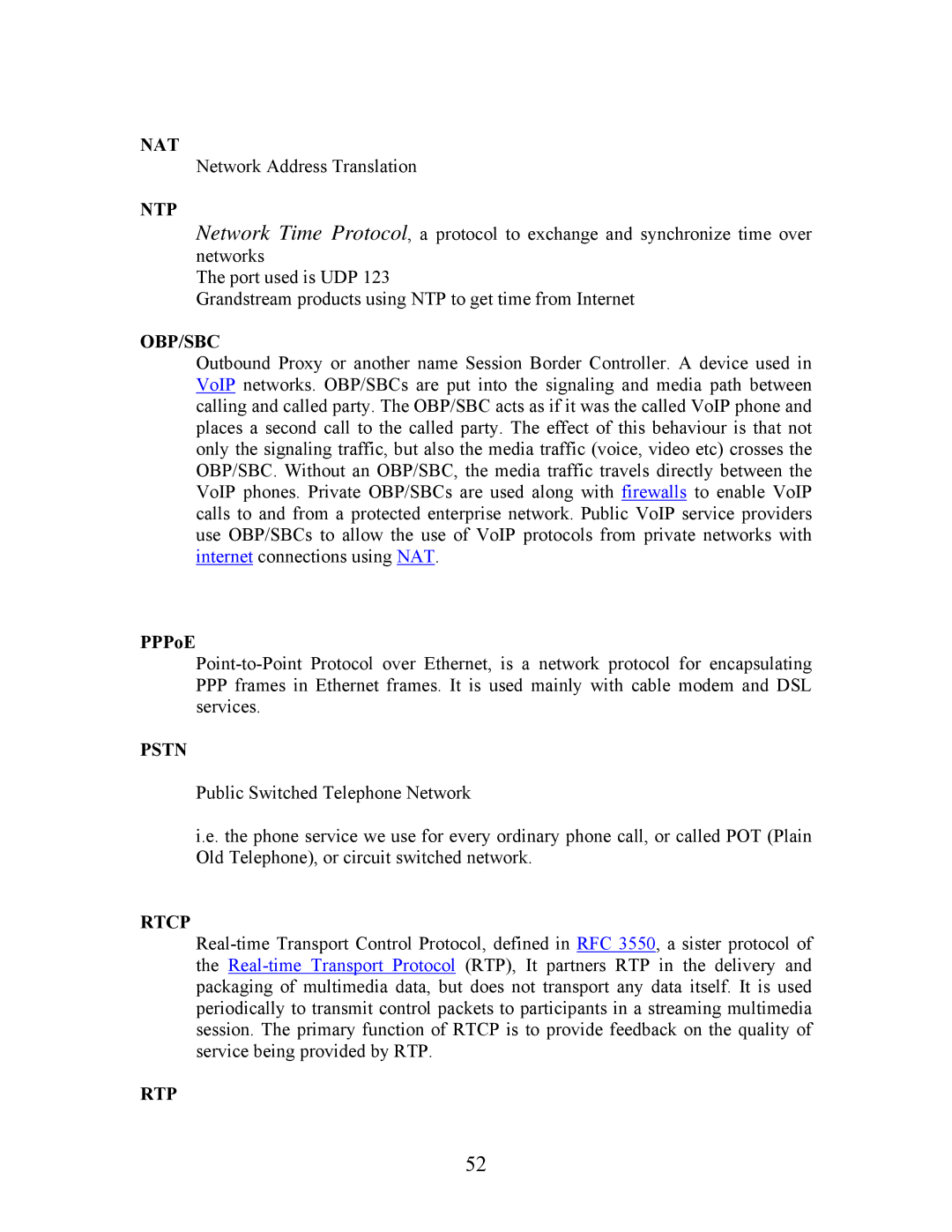NAT
Network Address Translation
NTP
Network Time Protocol, a protocol to exchange and synchronize time over networks
The port used is UDP 123
Grandstream products using NTP to get time from Internet
OBP/SBC
Outbound Proxy or another name Session Border Controller. A device used in VoIP networks. OBP/SBCs are put into the signaling and media path between calling and called party. The OBP/SBC acts as if it was the called VoIP phone and places a second call to the called party. The effect of this behaviour is that not only the signaling traffic, but also the media traffic (voice, video etc) crosses the OBP/SBC. Without an OBP/SBC, the media traffic travels directly between the VoIP phones. Private OBP/SBCs are used along with firewalls to enable VoIP calls to and from a protected enterprise network. Public VoIP service providers use OBP/SBCs to allow the use of VoIP protocols from private networks with internet connections using NAT.
PPPoE
PPPframes in Ethernet frames. It is used mainly with cable modem and DSL services.
PSTN
Public Switched Telephone Network
i.e. the phone service we use for every ordinary phone call, or called POT (Plain Old Telephone), or circuit switched network.
RTCP
RTP
52
